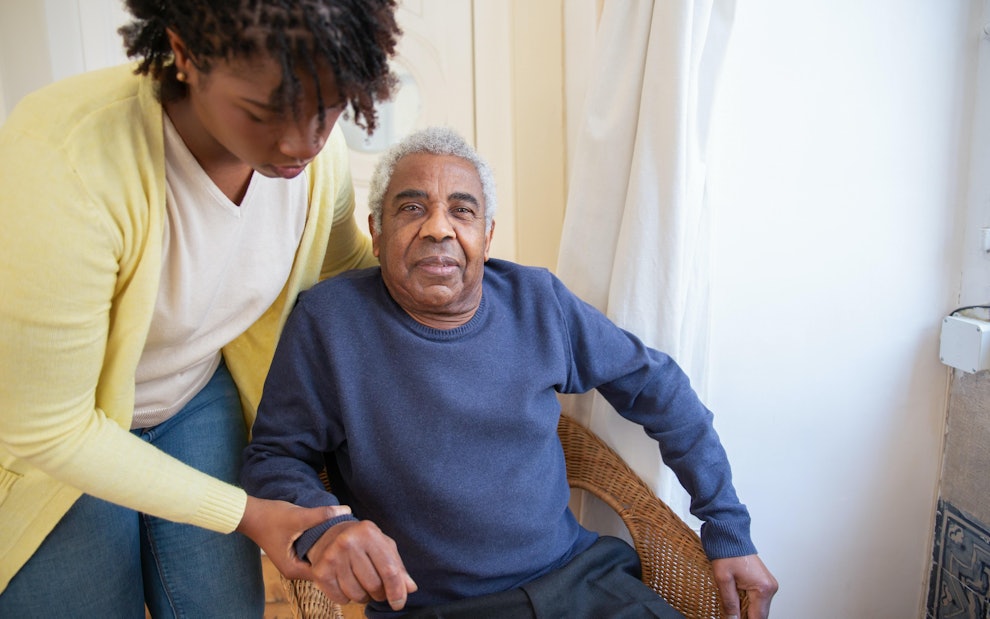Symptoms Of Blood Clot: Warning Signs, Diagnosis, Treatment, & Prevention
Article at a glance
Blood clots are a serious medical condition and need immediate attention.
There are several types of blood clots. The signs and symptoms of a blood clot will depend on the type of blood clot involved.
The risks of untreated blood clots include long-term health problems and even death.

Blood clots, also known as venous thromboembolism (VTE), can be a serious medical condition and must be addressed quickly. This article will explain the basics of blood clots including warning signs, risk factors, diagnosis, treatment options, and prevention.
What is A Blood Clot?
A blood clot is a mass of blood made up of platelets, proteins, and cells sticking together. Blood clots form in or travel to the blood vessels in the limbs, legs, lungs, brain, heart, and kidneys. Where the blood clot forms will designate what type of issues will happen as a result of the blood clot.

What Are The Types Of Blood Clots?
There are several types of blood clots including deep vein thrombosis, pulmonary embolism, and more.
Deep Vein Thrombosis (DVT)
Deep vein thrombosis (DVT) is a blood clot that forms in a deep vein of the body, usually in the lower leg or thigh. A DVT can block blood flow in the blood vessels which can cause a number of health issues including permanent damage to the valves in the vein. This can then lead to long-term problems such as pain, swelling, and leg sores.
A DVT can also break free and travel to the lungs. This is known as a pulmonary embolism (PE).
Pulmonary Embolism (PE)
A pulmonary embolism (PE) is a blood clot that causes a sudden blockage in a lung artery. A PE is incredibly serious and can even be life-threatening if the blood clot is particularly large or if there are many blood clots involved.
Cerebral Venous Sinus Thrombosis (CVST)
A cerebral venous sinus thrombosis (CVST) is a rare type of blood clot that forms in the venous sinuses in your brain. While the venous sinuses usually drain blood from the brain, a CVST prevents this blood drainage. In turn, this can cause a hemorrhagic stroke.

Who Is At Risk For Developing Blood Clots?
There are a number of factors that can cause a person to develop blood clots, including:
- Being immobile for long periods of time (such as during long flights)
- Recent hospitalization or surgery
- Old Age
- Being overweight or obese
- Family history of VTE or blood clotting disorders
- Recent or recurrent cancer
- Pregnancy
- Estrogen-based medication (i.e. hormonal birth control)
- Injury or trauma
- Those who take birth control pills
- High blood pressure

Blood Clot Signs And Symptoms
The symptoms of blood clots will depend on the location of the blood clot in the body.
DVT Symptoms
Symptoms of DVT include:
Warmth or tenderness over the vein
Pain and/or swelling in the body part involved
Redness of the skin
PE Symptoms
PE usually doesn’t coincide with any symptoms. However, when symptoms are present, they can include:
Shortness of breath
Chest pain
Coughing up blood
CVST Symptoms
The most common symptom of a CVST is a headache, but other symptoms related to CVST will depend on the location and extent of the blood clot. In more serious cases, symptoms may include:
Seizures
Focal neurologic deficit (i.e. speech, vision, and hearing problems)
Altered mental status

How Are Blood Clots Diagnosed?
Blood clots are diagnosed using several methods including:
Duplex Ultrasonography: This is an imaging test used to determine the blood flow in the veins. This is the standard test to diagnose DVT.
D‑Dimer Blood Test: A type of test that measures a substance that is released when a blood clot breaks up. A negative result implies that a patient most likely does not have a blood clot.
Contrast Venography: A special type of X‑ray that utilizes contrast dye that is injected into a large vein in either the foot or ankle so the doctor can see the deep veins in the leg or hip. This is the most accurate test but also rather invasive.
Magnetic Resonance Imaging (MRI): This is a type of diagnostic test that uses radio waves and a magnetic field to obtain images of the body. It can capture images of veins and clots, but it usually isn’t used for diagnosing DVT. Rather, MRIs are usually reserved for diagnosing PE in pregnant people or for patients when using contrast material would be harmful.
Computed Tomographic Pulmonary Angiography (CTPA): This is a special type of x‑ray that uses contrast dye to detect pulmonary embolisms. This is the standard imaging test for PE.
Ventilation-Perfusion (V/Q) Scans: A special type of scan that detects blood flow compared to oxygen flow to the lungs.
Pulmonary Angiography: A special type of X‑ray that inserts a catheter into a large vein (usually the groin) and into the arteries within the lung. From there, contrast material is injected via the catheter. This is an invasive procedure so it’s only reserved for certain cases.

How Are Blood Clots Treated?
Those who have a blood clot need to be treated immediately. Treatments for blood clots include:
Anticoagulants
Anticoagulants, also known as blood thinners, help stop the blood clots from getting bigger and also prevent new blood clots from forming. Blood thinners can be given intravenously, as an injection, or in pill form. The most common side effect of taking blood thinners is bleeding excessively.
Thrombolytics
Thrombolytics are medications that can dissolve blood clots. These are typically prescribed in cases of large blood clots that can lead to more severe complications. Thrombolytics can cause sudden bleeding, so these are typically only reserved for acute cases.
Thrombectomy/Embolectomy
Rarely, a blood clot will have to be removed surgically. A thrombectomy is the removal of a blood clot in those with DVT while an embolectomy is the removal of a blood clot in those with PE.
A Vena Cava Filter
A vena cava filter is used when blood thinners aren’t working or aren’t working as effectively as needed. When this happens, a filter can be inserted inside the inferior vena cava (the large vein that allows blood to travel back to the heart). This filter can then capture the clot before it reaches the lungs.

How To Prevent Blood Clots
Blood clots are preventable. Some strategies to prevent blood clots are provided below.
Make Healthy Lifestyle Choices
Making healthy lifestyle choices can help lower one’s blood clot risk. For example, maintaining a healthy weight, eating a balanced diet, exercising regularly, and avoiding or quitting smoking can all make a huge difference.
Change Positions Often
Staying in the same position for prolonged periods of time can increase the risk of blood clots, therefore, ensuring that you change positions often is important. This is especially important when traveling for long periods of time, such as on an airplane.
Take Proper Precautions After Surgeries
Following an operation, it’s important to follow a blood clot prevention plan. This blood clot prevention checklist from the Centers for Disease Control and Prevention can be helpful. Bring it to your healthcare provider prior to surgery to lower your risk of blood clots post-op.
What To Do If You Suspect You Have A Blood Clot
If you have any blood clot symptoms, immediately contact a healthcare professional for proper diagnosis and treatment.
Note: Visit The National Blood Clot Alliance website for more tips on blood clot prevention, treatment, recovery, and more.
FAQ
What are the early warning signs of blood clots?
Early warning signs include difficulty breathing, chest pain or discomfort, irregular or faster-than-usual heartbeat, and coughing up blood.
How long does it take for a blood clot to move through the body?
There isn't a set amount of time a blood clot moves through the body. In some cases it could be minutes or hours, while some can take days or weeks.
Sources
- https://www.cdc.gov/ncbddd/dvt/infographic-risk.html
- https://medlineplus.gov/bloodclots.html
- https://medlineplus.gov/deepveinthrombosis.html
- https://medlineplus.gov/pulmonaryembolism.html
- https://www.cdc.gov/ncbddd/dvt/index.html
- https://medlineplus.gov/bloodthinners.html
- https://www.cdc.gov/ncbddd/dvt/index.html
- https://www.stoptheclot.org/
- https://orthoinfo.aaos.org/en/diseases–conditions/deep-vein-thrombosis
- https://www.cdc.gov/ncbddd/dvt/travel.html
- https://www.cdc.gov/ncbddd/dvt/diagnosis-treatment.html
Become a patient
Experience the Oak Street Health difference, and see what it’s like to be treated by a care team who are experts at caring for older adults.




